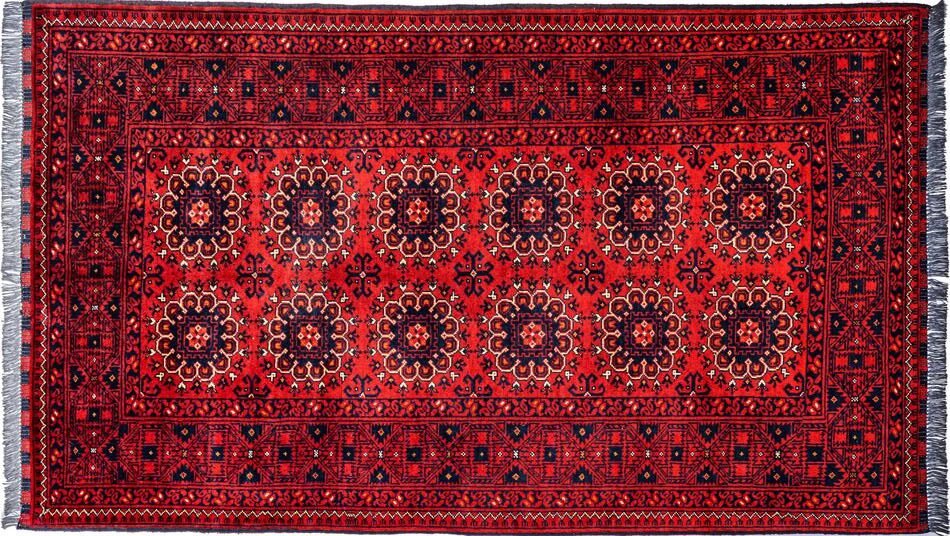Baluch (or Baloch) people speak a language belonging to western Iranian languages, sister to Kurdish. However, they live alongside the south-eastern natural borders of the Iranian plateau. They most likely descended from ancient nomads whose great migration eastward occurred during Sassanid emperors’ rule. This article will tell you about the history behind the Baluch rug and its unique texture and look.
Baluch people still continue a semi-nomadic lifestyle in Iran, Pakistan, and Afghanistan. Baluchs have a great affection for ornaments. With an ancient grace, their embroideries are used today as courtly fineries.
No matter a jeweled bridal gown or a woolen rug, the Baluch women put the same charm in all their hand-made rugs. The Baluch rug is actually not made in Baluchistan but in Khorasan province by dispersed subtribes of Baluchs. And also by some non-Balouh tribes of the region whose weavers are deeply under the influence of their Balouh neighbors.

Technical Aspects and the Structure of Baluch Rug
Knots are asymmetrical (Persian) in the Baluch rug. Rug artisans make warps made from wool, but they also use cotton warps in recent decades. The knotting style includes both single-weft and double-weft, but you’ll notice the latter more.
The silken pile is also possible for dowry rugs indicating Baluchs’ deep affection for grandeur and grace. Instead, wide goat-haired selvages are typical and good clues to Baluch rugs. Area rugs are more popular than rug sizes due to the tribal nature of Baluch rugs.


Dyeing and Painting of The Baluch Rug
Dark shades are dominant on the Baluch palette. Midnight blue, brownish-black, deep dark red, dark reddish or purplish browns, and dark violet are the primary colors. Including those out of which gleam tinges of ivory, camel, and jade. The rug artisan outlines the patterns in black. For camels, they use undyed camel hair, mainly in prayer rugs.
Different hues of red glow are against each other in repeating designs woven by Baluch tribes of northeastern Khorasan.


Designs and Patterns
Geometric patterns are the gems of Baluch designs. They use it elaborately on all-over designed or prayer rugs, with the grace you would see on a Baluch necklace.
Baluch rug artisans use various diamonds, rectangles, hexagons, octagons, geometric rosettes, and tiny hooked medallions. And also as repeating or alternating patterns.
Each Baluch subtribe has its own interpretation of prayer designs. So you will find a wide range of them. Coordinated designs with repeating motifs are popular on area rugs. Plus, also on saddlebags, sofra, and other woven rugs (flat-woven and piled ones).
Baluch subtribes occupied regions between Mashhad and Herat (two old cities in Khorasan) on both sides of the Iran-Afghanistan border. The rugs coming from these tribes indicate Turkmen and Kormanj influences. But recognizing Baluch rug is not difficult: the shared patterns are arranged more intricately on them.


Has the stunning charm and delicacy of the Baluch rug stolen your attention? If yes, Head over to our Louisville, KY Rug Store, or visit our website to look at the finest Baluch rugs we’ve collected in our great selection of 10,000 rugs.
Our approval policy gives you the opportunity to try the rugs in your room before you buy them. In addition to that, with our White Glove Service, you don’t have to lift a finger. Our expert team takes care of bringing the rugs, setting furniture aside, wiping floors, and placing them in your rooms. So don’t forget to give us a call to find out more about the irresistible Oriental rugs we have to offer!

